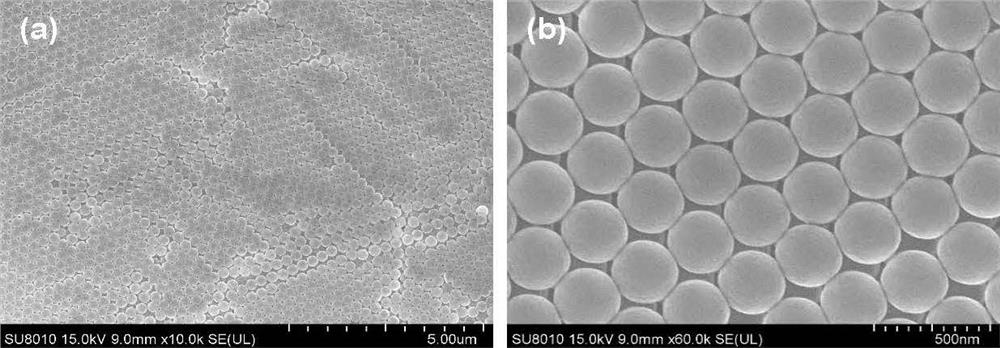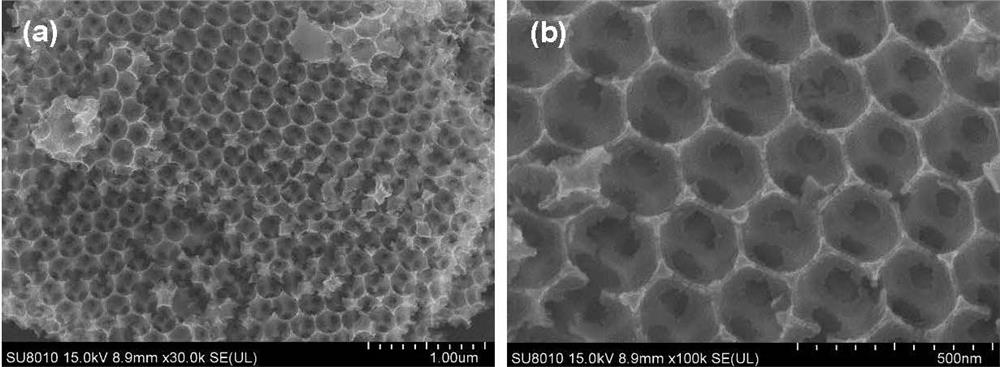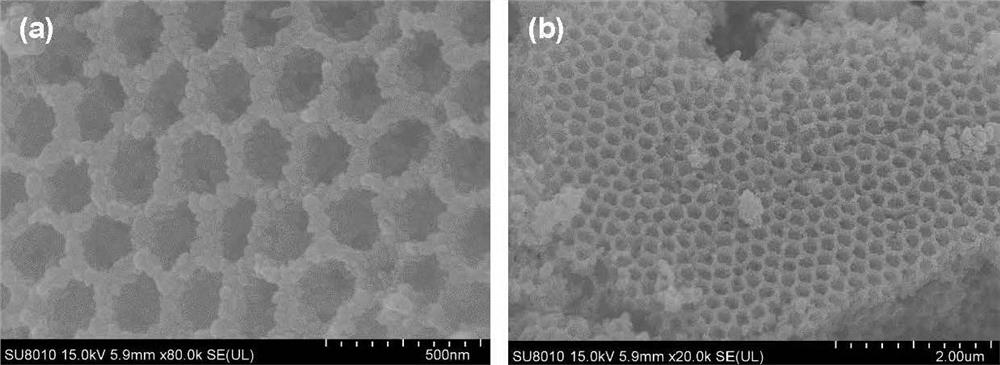Preparation method of nano-silver inverse opal SERS (Surface Enhanced Raman Scattering) probe for bipyridine herbicide detection
An inverse opal and herbicide technology, applied in the field of material science, can solve problems such as pollution and difficult analysis results, achieve the effects of good consistency and repeatability, improve SERS activity, and stabilize structure
- Summary
- Abstract
- Description
- Claims
- Application Information
AI Technical Summary
Problems solved by technology
Method used
Image
Examples
specific Embodiment approach
[0035] Specific embodiments: a method for preparing a nano-silver inverse opal SERS probe for the detection of bipyridine herbicides, characterized in that: the SERS probe is formed by self-assembly of monodisperse polystyrene microspheres by gravity sedimentation Hexagonal close-packed colloidal crystal template, and then fill the titanium source solution into the polystyrene photonic crystal gap, after aging and heat treatment, a titanium dioxide inverse opal film is prepared. The surface of the film is rich in hydroxyl groups so that silver ammonia ions are adsorbed on its surface. The dual role of polyvinylpyrrolidone (PVP) stabilization and reduction, reducing the silver ammonia solution to silver nanoparticles, paraquat molecules and diquat molecules adhere to the surface of nano-silver inverse opal through electrostatic interaction, using the local domain surface plasmon resonance field, enhance the conventional Raman signal of bipyridyl herbicide molecules, and realize ...
Embodiment
[0038] Example: Monodisperse polystyrene microspheres are self-assembled by gravity sedimentation to form a hexagonal close-packed colloidal crystal template, and then the titanium source solution is filled into the polystyrene photonic crystal gap, after aging and heat treatment, titanium dioxide inverse opal is prepared Film, the surface of the film is rich in hydroxyl groups so that silver ammonium ions are adsorbed on its surface, through the double action of polyvinylpyrrolidone (PVP) stabilization and reduction, the silver ammonia solution is reduced to silver nanoparticles, paraquat molecules and diquat molecules pass through The electrostatic interaction adheres to the surface of the nano-silver inverse opal, and the localized surface plasmon resonance field of the metal surface is used to enhance the conventional Raman signal of the bipyridyl herbicide molecule, thereby realizing the detection of the trace amount of the bipyridine herbicide.
[0039] The first step is ...
PUM
 Login to View More
Login to View More Abstract
Description
Claims
Application Information
 Login to View More
Login to View More - R&D
- Intellectual Property
- Life Sciences
- Materials
- Tech Scout
- Unparalleled Data Quality
- Higher Quality Content
- 60% Fewer Hallucinations
Browse by: Latest US Patents, China's latest patents, Technical Efficacy Thesaurus, Application Domain, Technology Topic, Popular Technical Reports.
© 2025 PatSnap. All rights reserved.Legal|Privacy policy|Modern Slavery Act Transparency Statement|Sitemap|About US| Contact US: help@patsnap.com



